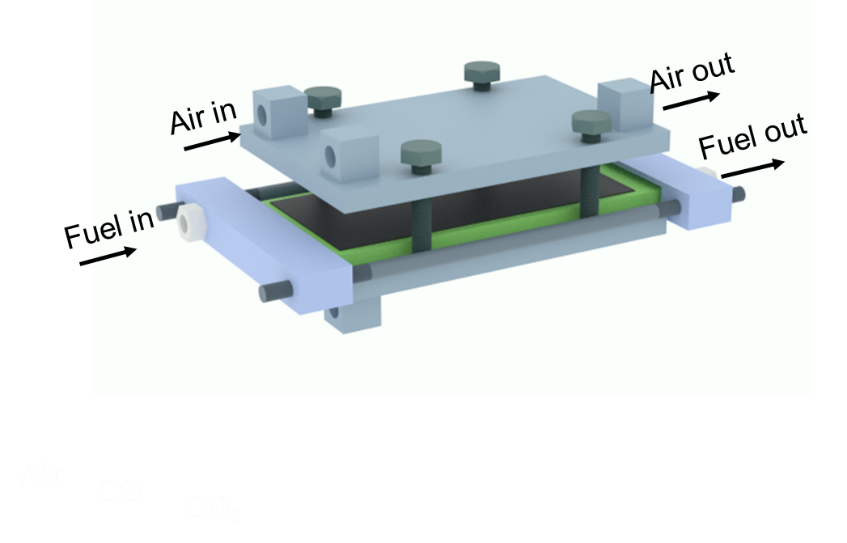The Fuel Cell Technology Group at the Ningbo Institute of Materials Technology and Engineering (NIMTE) of Chinese Academy of Sciences (CAS) has proposed a pulsed current strategy to monitor the intermittency of renewable energy, proving that the solid oxide electrolytic cells (SOECs) can realize efficient CO2 electrolysis under intermittent renewable energy power. The study was published in Carbon Energy.
CO2 recycling for efficient reuse facilitates alleviating the energy crisis and climate change, thus plays a crucial role in achieving the goal of "peak carbon dioxide emission and carbon neutrality". SOEC is a potential candidate device for efficiently electrolyzing CO2 to produce fuel, owing to its high energy conversion efficiency (ECE), reversible characteristics and relatively low comprehensive cost.
To explore the performance and reaction mechanism of CO2 electrolysis based on SOECs under renewable energy power, researchers at NIMTE developed a pulsed current strategy, which replicates the practical periodic fluctuations of intermittent renewable energy power. Under the pulsed current ranging from -100 to -300mA/cm2 with a total operating time of about 800 h, a large-scale flat-tube SOEC with an active area of 60 cm2 was applied for the cyclic electrolysis of CO2.
The experimental results showed that after 100 cycles, the cell voltage degraded by 0.041%/cycle upon high pulsed current density (-300 mA/cm2), while 0.034%/cycle upon low pulsed current density (-100, -200 mA/cm2), indicating that the theoretical lifetime of SOECs can reach up to about 500 cycles. In addition, the total CO2 conversion rate with the SOECs reached 52% at the current density of -300 mA/cm2, which is close to the theoretical value of 54.3%.
Assuming that the gas in SOEC is thermally cycled, as the heat energy for heating the gas can be recovered through heat exchange, the calculated ECE approaches 98.2% at -400 mA/cm2 (1.3 V), proving the efficiency and stability of CO2 electrolysis employing SOECs.
This study has illuminated the outstanding performance and the industrial potential of SOECs in efficient electrochemical energy conversion, carbon emission reduction, and intermittent renewable energy storage.
The work was financially supported by the National Key Research & Development Project (Grant No. 2017YFE0129300), the National Natural Science Foundation of China (Grant Nos. U20A20251 and 11932005), the "from 0 to 1" innovative program of CAS (No. ZDBS‐LY‐JSC021), the Zhejiang Provincial Key R&D Program (No. 2021C01101), and the Ningbo Science and Technology Innovation 2025 Major Project (Nos. 2019B10046, 2020Z107).


Fig. The flat-tube solid oxide electrolytic cells for CO2 electrolysis (Image by NIMTE)
Contact
WU Anqi
Ningbo Institute of Materials Technology and Engineering
Email: wuanqi@nimte.ac.cn

